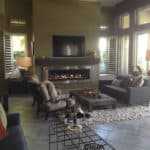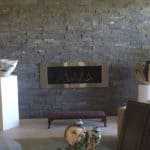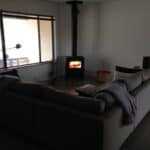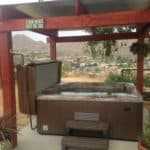Fireplaces are an integral part of home decor. They add warmth and character to homes and provide a cozy ambiance. However, fireplaces also pose a number of safety risks.
If you want to install a fireplace in your home, there are several factors to consider before making the final decision. Here are some of the most common types of fireplaces and their features.
Types of Fireplace
There are three main categories of fireplaces: gas-fired, wood-burning, and electric. Each type has its own advantages and disadvantages. The following sections describe each category in detail.
Gas-Fired Fireplaces
Gas-fired fireplaces use natural or propane gas as fuel. These units can be installed indoors or outdoors. Some models have built-in heaters that allow them to operate even when it is cold outside. A major advantage of this type of unit is that they do not require any kind of chimney flue system. This makes installation easier than with other types of fireplaces. Another benefit of these units is that they burn cleanly without producing smoke. In addition, because they don’t produce carbon monoxide, they won’t cause headaches for people who suffer from CO poisoning. Disadvantages include high initial cost and maintenance costs. Also, if you live in areas where air quality standards aren’t very strict, then installing one may violate local regulations.
Wood-Burning Fireplaces
Wood-burning fireplaces rely on burning logs or coal inside the hearth area. Because they generate soot, they must be cleaned regularly using special tools. If properly maintained, however, they will last many years. One disadvantage of this type of fireplace is that it requires regular cleaning. It’s important to note that while modern stoves and furnaces often come equipped with automatic ignition systems, traditional wood-burning fireplaces usually need manual lighting.
Electric Fireplaces
Electric fireplaces run off electricity instead of gas or wood. While they’re more expensive than other options, they offer convenience and ease of operation. You simply turn them on and leave them alone until you decide to light them again. There are two basic styles of electric fireplaces: freestanding and wall-mounted. Freestanding versions look like small tables and typically sit atop a floor stand. Wall-mounted ones fit into standard recessed electrical boxes. Both kinds of electric fireplaces are available in various sizes and shapes. For example, some models feature glass doors that open up to reveal the interior space. Others have decorative screens that cover the opening.
Advantages and Disadvantages of Different Types of Fireplaces
Each type of fireplace offers certain benefits over others. Below we’ll discuss what those benefits are and how they compare to one another.
Gas-Filled Fireplaces Advantages:
Cleaner Burning – Unlike wood-burning fireplaces, which emit large amounts of soot, gas-filled fireplaces create no visible emissions at all. As such, they are considered safer alternatives to conventional wood-burning fireplaces.
Ease of Installation – Since gas-filed fireplaces don’t require a chimney flue system, they make installation much simpler than with other types of fires.
Disadvantage:
High Initial Cost – The price tag associated with gas-fired fireplaces tends to be higher than that of other types of fireplaces due to the fact that they require specialized equipment.
Wood-Burning Fireplaces Advantages:
No Emissions – Like gas-fired fireplaces, wood-burning fireplaces tend to be cleaner than other forms of heating. That means they don’t contribute to smog formation.
No Maintenance Required – Once set up correctly, wood-burning fireplaces should never need to be cleaned. All that needs to happen is to replace burned-out logs every few months.
Disadvantage:
Expensive To Install And Maintain – Compared to other types of fireplaces, wood-burners can cost thousands of dollars to purchase and hundreds of dollars per year for maintenance fees.
Electric Fireplaces Advantages:
Convenience – With electric fireplaces, you just plug them in when you want to heat and then unplug them once the temperature has reached its desired level. This makes them ideal for people who work from home because they won’t have to worry about having to keep fuel ready.
Disadvantage:
Higher Upfront Costs – Although electric fireplaces may seem cheaper upfront, they still carry high initial costs compared to other types of fireboxes. In addition, it’s important to note that these units will not last as long as traditional fireplaces.
You’re looking for a fireplace that fits your style, but you don’t know where to start. Imagine choosing a fireplace that suits your decor and lifestyle. Whether you’re looking for a traditional stone hearth, a modern glass insert, or even a wood-burning stove, we’ve got you covered. At All Seasons Fireplaces Pools and Spas, we offer a variety of fireplace styles including traditional stone hearths, modern glass inserts, and wood-burning stoves. We strive to provide the best customer service possible. Call us today to book an appointment!







